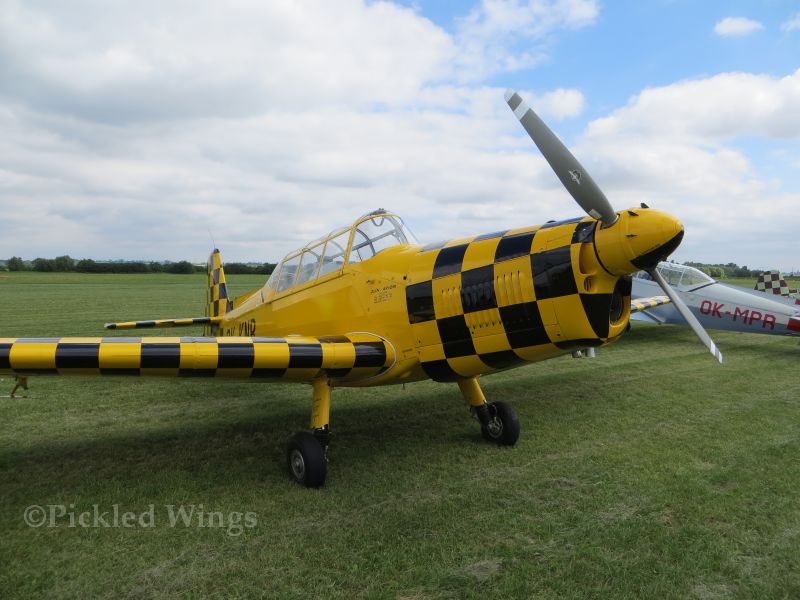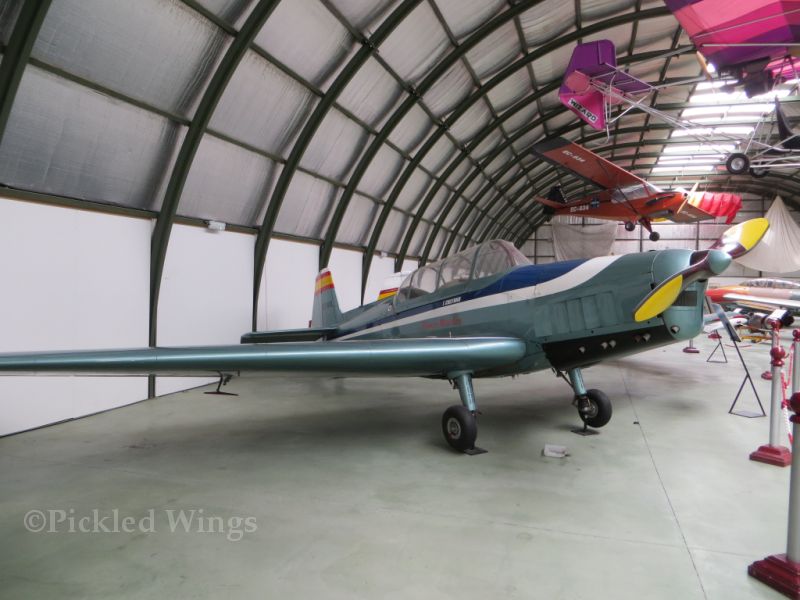Playing to Strengths
Founded in 1934, Zlín Aircraft is a long standing player in the Czech aviation industry and a world renowned producer of trainer and sport aircraft. The company was developed from the Bat’a company’s flight school complex, which had been established in the 1920s in the eastern Czech town of Otrokovice, and expanded into aircraft production in the early 1930s.
The established flight training and aircraft production facilities at Otrokovice most certainly played a key role in the company being forced to build training aircraft under German occupation in the Second World War.
Zlín emerged from the war as a nationalized company and with a design for an aircraft that would mark the beginning of a true dynasty of trainer and sport aircraft, the Z-26 Trenér. Six major variants would ultimately branch from the baseline Z-26 with several sub-variants growing from them. When Trenér production ended in the 1970s, over 1400 had been built across all versions in the family.
What had begun simply as Zlín’s response to an early post war tender for a new basic trainer for the Czechoslovak air force was destined to become much, much more.
From a Teacher to an Acrobat
The basic Z-26 aircraft incorporated a significant amount of wood in its structure. The first major variant, the Z-126, did away with the wood components in favour of metal ones. Modifications to the Z-126 to make it suitable for glider towing resulted in the Z-226 in 1954. The Z-226 would mark a major turning point in the Trenér family as it was during flight tests of the initial Z-226 that the design’s excellent aerobatic qualities were discovered.
Work was undertaken to bring out the aerobatic abilities of the Z-226. Before the 1950s were out, this variant of the series was winning international aerobatics competitions and capturing the attention of the world in the process.
The Z-226 was the dominant aircraft type in international competitions through the 1960s and was considered one of the best aerobatics machines of the era.
Popular Far and Wide
The aerobatic success of the Z-226 did much to bring the Trenér family attention and export interest from around the world. Ultimately, variants of the aircraft family were exported to more than 30 countries for both civilian and military use.
The aircraft’s combination of trainer origins and aerobatic abilities made it a popular aircraft with flying clubs in many countries around the world as it gave them the ability to conduct both basic training and more advanced training using the same aircraft family. The aircraft were economical to operate and undemanding where maintenance was concerned.
An additional advantage was that Trenérs from the Z-226 onwards could be used for glider towing. It would be no form of overstatement to say that the members of this aircraft family had a lot to offer anyone who purchased them.
Trenérs were exported to Australia, France, Germany, Italy, New Zealand, Poland, South Africa, the United Kingdom and the United States to name but a few.
The Trenér Family
The Zlín Trenér family consists of six basic variants. Each of those variants has its own sub-variants. This section will cover the six basic versions and touch on their major sub-types.
Z-26 Trenér/C-5
The Z-26 was the earliest member of the family, first flying in 1947. Unlike later Trenér variants, the Z-26 had wings of fabric over wood frame construction.
In Czechoslovak military service, the Z-26 was known as the C-5. The “C” in the military designation came from the word Cvičit, the Czech verb for exercise or practice.
The Z-26 was used strictly as a trainer.
Z-126 Trenér/C-105
1953 saw the introduction of the first major improvement to the Trenér line, the Z-126. In military service, it had the designation of C-105.
The main improvement the Z-126 brought with it was the replacement of fabic over wood frame structures with metal ones. While this did make the Z-126 heavier than the Z-26, it also made the Z-126 much stronger and durable.
Like the Z-26 before it, the Z-126 was used only as a trainer.
Z-226 A/B/T/C-205
In 1954, the Z-226 arrived and brought with it a marked increase in performance over the Z-126 through a new engine of higher horsepower and some measures taken to reduce the weight of the aircraft.
The main impetus for the creation of the Z-226 was to fulfill a requirement for a modern glider towing aircraft. The glider tug sub-variant was designated Z-226B and was given the nickname Bohatýr. The nickname came from a knight-errant type character that was very common in Slavic mythology.
The increase in power and performance in the Z-226 revealed the aerobatic potential of the aircraft family and a single seat version, the Z-226A Akrobat, was created to exploit that potential.
The Z-226T was a training optimized variation of the model and existed in military service as the C-205.
Z-326 Trenér Master/Z-326A Akrobat/C-305
The Z-326 version first flew in 1957 and represented a significant upgrade to the aircraft in both structure and performance. The changes were extensive enough that the Z-326 was given the name Trenér Master to set it apart from previous models.
Like the Z-226 before it, the Z-326 included an engine of yet higher horsepower.
The Z-326 also came with a completely redesigned wing that introduced retractable landing gear and the option for wingtip fuel tanks. It also had a redesigned cockpit canopy with reduced framing to improve outward vision for the pilot.
In military services, this version was known as C-305.
An aerobatics optimised version was created and designated Z-326 Akrobat.
Z-526 Trenér Master/Z-526A/ Z-526F
Modifications made to the Z-326 ultimately resulted in the Z-526 Tréner Master variant which first flew in 1959 and was the ultimate development of the Trenér.
The Z-526, like the Z-226 and Z-326, was developed into sub variants that included a basic trainer version, a glider tug modification and a single seat aerobatics optimized variation known as the Z-526A Akrobat.
An additional variant of the Z-526 was the Z-526F, this version was fitted with an engine that featured fuel injection.
Z-726 Trenér Universal
A series of modifications to the Z-526 to keep the Trenér competitive against newer aerobatics aircraft resulted in the Z-726, the final member of the line. Unfortunately, many of the modifications that created the Z-726 resulted in a heavier aircraft with eroded aerobatic capacity.
Only 30 examples of the Z-726 were made and they were primarily used for training and as glider tugs.
Trenérs Today
While the Trenér family’s competition days are behind it, many examples remain flying and popular as sport planes in private hands or in flying clubs and are not uncommon as solo or team performers at airshows in Europe.
To learn more about the Trenér, the Hungarian based zlintrener.com website is a good place to start. The website is dedicated to the aircraft family and very thorough.
Another good article about the Trenér can be found at the website of the Afterburner aviation magazine.
An overview of the Zlín company and its history can be found at the company website.






